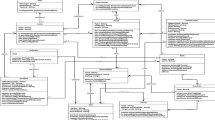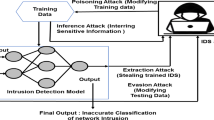Abstract
In the developing technology, crime reduction is one of the major and complex processes due to the various techniques and minimum amount of crime-related data. The traditional method is difficult to identify the crime activities with effective manner due to the minimum data. So, this paper introduces the novel big data and soft computing techniques for recognizing the crime activities with effective manner. Initially, the crime activities-related data have been collected from the various resources present in the big data. From the collected data, the inconsistent data and missing values are eliminated by applying the incremental mean normalization method. After that, the similar crime data have been clustered with the help of the fireflies-based fuzzy cognitive map neural networks which help to predict the crime activity-related features with effective manner. Finally, the prediction process is done by using the enhanced associative neural networks approach. The efficiency of the system is evaluated with the help of the experimental results and discussions in terms of the precision, recall, accuracy.







Similar content being viewed by others
References
Farmer L (2018) ‘Subverting the Settled Order of Things’: the crime of sedition in Scotland, 1793–1849. In: Davis M, McLeod E, Pentland G (eds) Political trials in the age of revolution. Palgrave (in press)
Farmer L (2014) Criminal law as a security project. Criminol Crim Justice 14(4):399–404. https://doi.org/10.1177/1748895814541901
Jacobs, Peters (2003). Labor racketeering: the Mafia and the Unions. Crime Justice 30. JSTOR 1147700
Hill PB (2003) The Japanese mafia: Yakuza, law, and the state. Oxford University Press, Oxford
Olligschlaeger AM Artificial neural networks and crime mapping. http://citeseerx.ist.psu.edu/viewdoc/download?doi=10.1.1.131.8483&rep=rep1&type=pdf
Saoumya ASB (2015) A predictive model for mapping crime using big data analytics. Int J Res Eng Technol 4(4)
Kiani R, Mahdavi S, Keshavarzi A (2015) Analysis and prediction of crimes by clustering and classification. Int J Adv Res Artif Intell 4(8)
Li T (2016) Criminal behavior analysis method based on data mining technology. In: International conference on smart city and systems engineering (ICSCSE) in IEEE
Selamat A, Anuar S Hybrid particle swarm optimization feature selection for crime classification. New Trends Intell Inf Database Syst 101–110
Seo Jae-Hyun, Choi Daeseon (2016) Feature selection for chargeback fraud detection based on machine learning algorithms. Int J Appl Eng Res 11(22):10960–10966
Markinos A, Papageorgiou E, Stylios C, Gemtos T Introducing fuzzy cognitive maps for decision making in precision agriculture. In: European Conference on Precision Agriculture available at, http://www.researchgate.net/publication/237007624_Introducing_Fuzzy_Cognitive_Maps_for_decision_making_in_precision_agriculture
https://catalog.data.gov/dataset/crime-data-from-2010-to-present
Ahmad SMT, Haque S, Khan PS (2014) Privacy preserving in data mining by normalization. Int J Comput Appl 96(6)
Chen Y, Mazlack L, Lu L (2012) Learning fuzzy cognitive maps from data by ant colony optimization. In: Annual conference on genetic and evolutionary computation
Kandasamy V, Smarandache F Fuzzy cognitive maps and neutrosophic cognitive maps, available at, http://arxiv.org/ftp/math/papers/0311/0311063.pdf
De Maesschalck R, Jouan-Rimbaud D, Massart DL (2000) The Mahalanobis distance. Chemometr Intell Lab Syst 50:1–18
Papageorgiou EI, Papandrianos NI, Karagianni G, Kyriazopoulos GC, Sfyras D A fuzzy cognitive map based tool for prediction of infectious diseases. Available at, http://debugit.eu/documents/PapageorgiouFUZZ2009.pdf
Wang L Artificial neural network for anomaly intrusion detection. Available at, https://www.cs.auckland.ac.nz/courses/compsci725s2c/archive/termpapers/725wang.pdf
Kim-Kwang Raymond, “Prediction of crime occurrence from multi-modal data using deep learning”, PLoS One. 2017; 12(4):
Sahin Y, Duman E (2011) Detecting credit card fraud by ANN and logistic regression. Innovations in intelligent systems and applications in IEEE
Bolton RJ, Hand DJ (2002) Statistical fraud detection: a review. Stat Sci 235–249
Vassie K, Morlino G (2012) Natural and artificial systems: compare, model or engineer. In: Ziemke T, Balkenius C, Hallam J (eds) From Animals to Animats 12. SAB 2012. Lecture Notes in Computer Science, vol 7426. Springer, Berlin, Heidelberg
Babakura A, Sulaiman N, Yusuf M (2014) Improved method of classification algorithms for crime prediction. In: International symposium on biometrics and security technologies (ISBAST), IEEE 2014
Usha D, Rameshkumar K (2014) A complete survey on application of frequent pattern mining and association rule mining on crime pattern mining. Int J Adv Comput Sci Technol. ISSN 2320-2602
Acknowledgements
The authors would like to extend their sincere appreciation to the Deanship of Scientific Research at king Saud University for its funding this research group No. (RGP – 1436-035).
Conflict of interest
The authors declared that they have no conflict of interest to this work.
Author information
Authors and Affiliations
Corresponding author
Rights and permissions
About this article
Cite this article
Altameem, T., Amoon, M. Crime activities prediction using hybridization of firefly optimization technique and fuzzy cognitive map neural networks. Neural Comput & Applic 31, 1263–1273 (2019). https://doi.org/10.1007/s00521-018-3561-7
Received:
Accepted:
Published:
Issue Date:
DOI: https://doi.org/10.1007/s00521-018-3561-7




